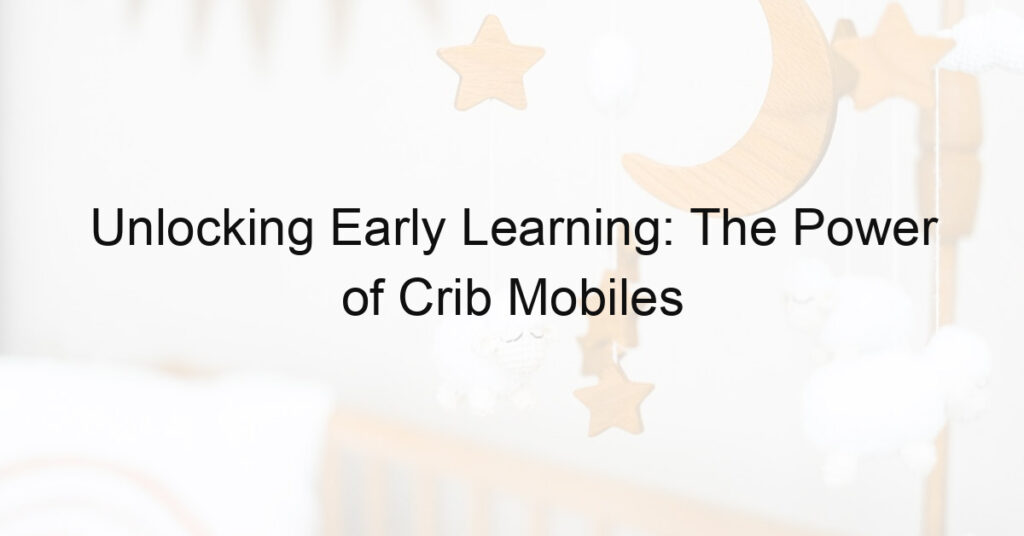
Introduction: First-time Mom Tips for Baby Sleep
As a new mom, you might have many questions about your baby’s sleep. Why does my baby wake up so often? How much sleep does my baby need? In this post, we will provide you with some essential tips to help you understand and manage your baby’s sleep better.
- Understanding the Importance of Baby Sleep
- Common Misconceptions about Baby Sleep
Baby sleep is more than just a time for rest. It is a critical period for growth and development. During sleep, your baby’s brain works on processing the new information learned during the day. It’s also when physical growth occurs, as growth hormone is primarily secreted during deep sleep. Therefore, ensuring your baby gets enough quality sleep is crucial for their health and development.
There are many misconceptions about baby sleep that can lead to unnecessary stress and confusion for new moms. One common myth is that babies should sleep through the night. The truth is, it’s normal for babies to wake up several times during the night, especially in the first few months. Another misconception is that you should never wake a sleeping baby. However, in the early weeks, it’s important to wake your baby for feedings if they’re sleeping for more than 4 hours at a time.
Understanding your baby’s sleep patterns and needs can help you create a more harmonious sleep environment for your little one. In the following sections, we will delve deeper into newborn sleep patterns, common sleep problems, and sleep training methods.
Baby Sleep Guide: Understanding Newborn Sleep Patterns
Understanding your newborn’s sleep patterns can be a challenge for first-time parents. Babies have a different sleep cycle compared to adults, which can sometimes be confusing. In this guide, we will break down the stages of newborn sleep to help you better understand your little one’s sleep habits.
Stages of Newborn Sleep
Newborns experience two primary stages of sleep, which are:
- REM Sleep
- Non-REM Sleep
REM Sleep
REM stands for Rapid Eye Movement. This is the stage of sleep where dreams occur. For newborns, about 50% of their sleep is REM sleep. This is because REM sleep plays a crucial role in the development of their brain. During REM sleep, your baby might twitch, jerk, or even smile. Don’t worry, these are normal signs that your baby is in the REM stage of sleep.
Non-REM Sleep
Non-REM sleep, also known as quiet sleep, is the deep sleep stage. During this stage, your baby’s body grows and regenerates. Non-REM sleep is divided into four stages, from light sleep to very deep sleep. Your baby will be quiet and still during this stage. If you notice your baby is not moving much and is breathing regularly, they are likely in the Non-REM stage of sleep.
Understanding these stages can help you better respond to your baby’s needs and establish a healthy sleep routine. Remember, every baby is unique and may not follow the ‘typical’ sleep patterns. It’s important to observe your baby and adjust as needed.
Typical Baby Sleep Schedule
Understanding your baby’s sleep schedule can help you create a routine that works for both of you. Here’s a typical baby sleep schedule based on their age:
- 0-3 months: During the first three months, babies sleep for about 14-17 hours a day. Their sleep is spread throughout the day and night, with periods of wakefulness lasting 1-3 hours. It’s important to remember that all babies are different, and some may sleep more or less than this.
- 3-6 months: By this age, most babies start to develop a regular sleep-wake cycle. They may sleep for about 12-15 hours a day, with longer stretches at night. They may also start to take 2-3 naps during the day. Again, these are just averages, and your baby’s sleep pattern may vary.
- 6-12 months: At this stage, babies typically sleep for about 12-14 hours a day. They usually have two naps during the day and sleep for longer periods at night. However, some babies may still wake up during the night.
Remember, these are just general guidelines and every baby is unique. It’s always best to follow your baby’s cues and consult with a pediatrician if you have any concerns about your baby’s sleep.
FAQs for New Mothers: Baby Sleep Problems and Solutions
As a new mother, you may have numerous questions about your baby’s sleep patterns. Here, we will discuss some common baby sleep problems and provide solutions to help you and your baby get a good night’s sleep.
Common Baby Sleep Problems
Let’s explore some of the most common sleep problems that new mothers often face with their babies:
- Problem 1: Frequent Night Wakings
- Problem 2: Short Naps
- Problem 3: Difficulty Falling Asleep
Many babies wake up several times during the night. This is normal, especially during the first few months. However, if your baby is older and still waking up frequently, it might be a sign of a sleep problem.
Short naps can be frustrating for both the baby and the mother. If your baby is not getting enough sleep during the day, it can affect their mood and overall health. It’s important to note that the length of a baby’s nap can vary greatly, but if your baby’s naps are consistently short, it might be a sign of a sleep problem.
Some babies have trouble falling asleep, even when they are tired. This can be due to a variety of reasons, such as overstimulation, discomfort, or a lack of a bedtime routine. If your baby consistently struggles to fall asleep, it might be a sign of a sleep problem.
Remember, every baby is unique and their sleep patterns can vary. However, if you notice any of these problems persisting, it’s a good idea to seek advice from a healthcare professional. In the next section, we will discuss some solutions to these common baby sleep problems.
Solutions to Common Baby Sleep Problems
As a new mom, you may be facing some common baby sleep problems. But don’t worry, you’re not alone. Here are some solutions that can help you navigate through these challenges.
- Solution 1: Establish a Routine
- Solution 2: Create a Sleep-Friendly Environment
- Solution 3: Understand Baby’s Sleep Cues
Creating a consistent sleep routine can help your baby understand when it’s time to sleep. Start with a calming bedtime routine that includes activities like a warm bath, a bedtime story, or a lullaby. This routine should be the same every night, and it should end in the room where your baby sleeps. This consistency can help signal your baby that it’s time to sleep.
A sleep-friendly environment is essential for your baby’s sleep. This means a dark, quiet, and cool room. Consider using a white noise machine to drown out any disruptive noises. Also, ensure the room is safe for your baby. This includes using a firm sleep surface, keeping the crib empty of toys and blankets, and placing your baby on their back to sleep.
Every baby has unique sleep cues, and understanding these can help you know when your baby is ready for sleep. These cues may include rubbing eyes, yawning, or becoming fussy. By putting your baby to sleep when they show these signs, you can help prevent over-tiredness, which can make it harder for your baby to fall asleep.
Remember, every baby is different, and what works for one may not work for another. It’s important to be patient and flexible as you find what works best for your baby’s sleep.
Sleep Training for Babies: A Comprehensive Guide for First-Time Moms
As a first-time mom, you may be wondering about the best ways to help your baby sleep through the night. One of the most effective methods is sleep training. But what exactly is sleep training, and when should you start? Let’s delve into these questions.
What is Sleep Training?
Sleep training is a process that helps babies learn to fall asleep on their own and stay asleep throughout the night. It’s a vital part of your baby’s development and can make a significant difference in your and your baby’s quality of life.
- Definition and purpose of sleep training
- When to start sleep training
Sleep training, also known as sleep teaching or sleep conditioning, is a method used to teach babies how to sleep independently. The primary purpose of sleep training is to encourage healthy sleep habits and ensure your baby gets the rest they need for their growth and development.
Most experts agree that the best time to start sleep training is when your baby is between 4 to 6 months old. At this age, babies typically start to develop a regular sleep-wake cycle and are physically capable of sleeping through the night. However, every baby is unique, and it’s essential to consider your baby’s individual needs and development.
Remember, sleep training is a personal decision and should be approached with patience and consistency. It’s about finding what works best for you and your baby. Stay tuned for our next section where we will explore popular sleep training methods.
Popular Sleep Training Methods
There are several methods of sleep training that have been proven to be effective. Here are three popular methods that you can consider:
- Method 1: The Ferber Method
- Method 2: The “No Tears” Method
- Method 3: The “Fading” Method
Developed by Dr. Richard Ferber, this method involves letting your baby cry for a predetermined amount of time before providing comfort. The idea is to gradually increase the time your baby spends alone, helping them learn to soothe themselves to sleep. It’s important to note that this method is not about ignoring your baby’s cries, but about teaching them a valuable skill. However, it may not be suitable for all babies, particularly those with a high need for comfort.
Contrary to the Ferber method, the “No Tears” method focuses on minimizing crying as much as possible. This method, often associated with Dr. William Sears, encourages parents to respond immediately to their baby’s cries and soothe them back to sleep. This method can be very comforting for babies, but it may require a significant time commitment from parents.
The “Fading” method, also known as “gradual extinction,” involves gradually reducing your presence in your baby’s room until they can fall asleep on their own. This could mean sitting in a chair in your baby’s room until they fall asleep and gradually moving the chair further away over time. This method can be a good middle ground between the Ferber and “No Tears” methods.
Remember, every baby is unique and what works for one might not work for another. It’s important to choose a method that feels right for you and your baby. Don’t be afraid to try different methods until you find the one that works best for your family.
Conclusion: Baby Sleep Advice for New Moms
As we wrap up this comprehensive guide on baby sleep for first-time moms, it’s essential to remember that every baby is unique. What works for one might not work for another. However, understanding your baby’s sleep patterns and implementing sleep training techniques can significantly improve both your and your baby’s sleep quality.
- Recap of key takeaways
- Additional resources for first-time motherhood
Firstly, newborns sleep in cycles, and their sleep patterns differ significantly from adults. They typically sleep for 16-18 hours a day, in 3-4 hour intervals. Secondly, sleep problems are common in babies, but they can be managed with patience and consistency. Techniques such as establishing a bedtime routine, creating a sleep-friendly environment, and using soothing techniques can help. Lastly, sleep training is a process. It requires time and patience, but it can lead to your baby sleeping through the night.
Being a first-time mom can be overwhelming, but remember, you’re not alone. There are numerous resources available to guide you through this journey. Books like “The Happiest Baby on the Block” by Dr. Harvey Karp and “The Baby Whisperer Solves All Your Problems” by Tracy Hogg provide valuable insights into baby sleep and other parenting challenges. Additionally, joining local mom groups or online communities can provide support and shared experiences.
In conclusion, the journey of motherhood is a beautiful one, filled with joy, challenges, and endless learning. With the right knowledge and resources, you can navigate your baby’s sleep patterns and ensure a good night’s sleep for both of you. Remember, patience is key, and every small victory is worth celebrating.














